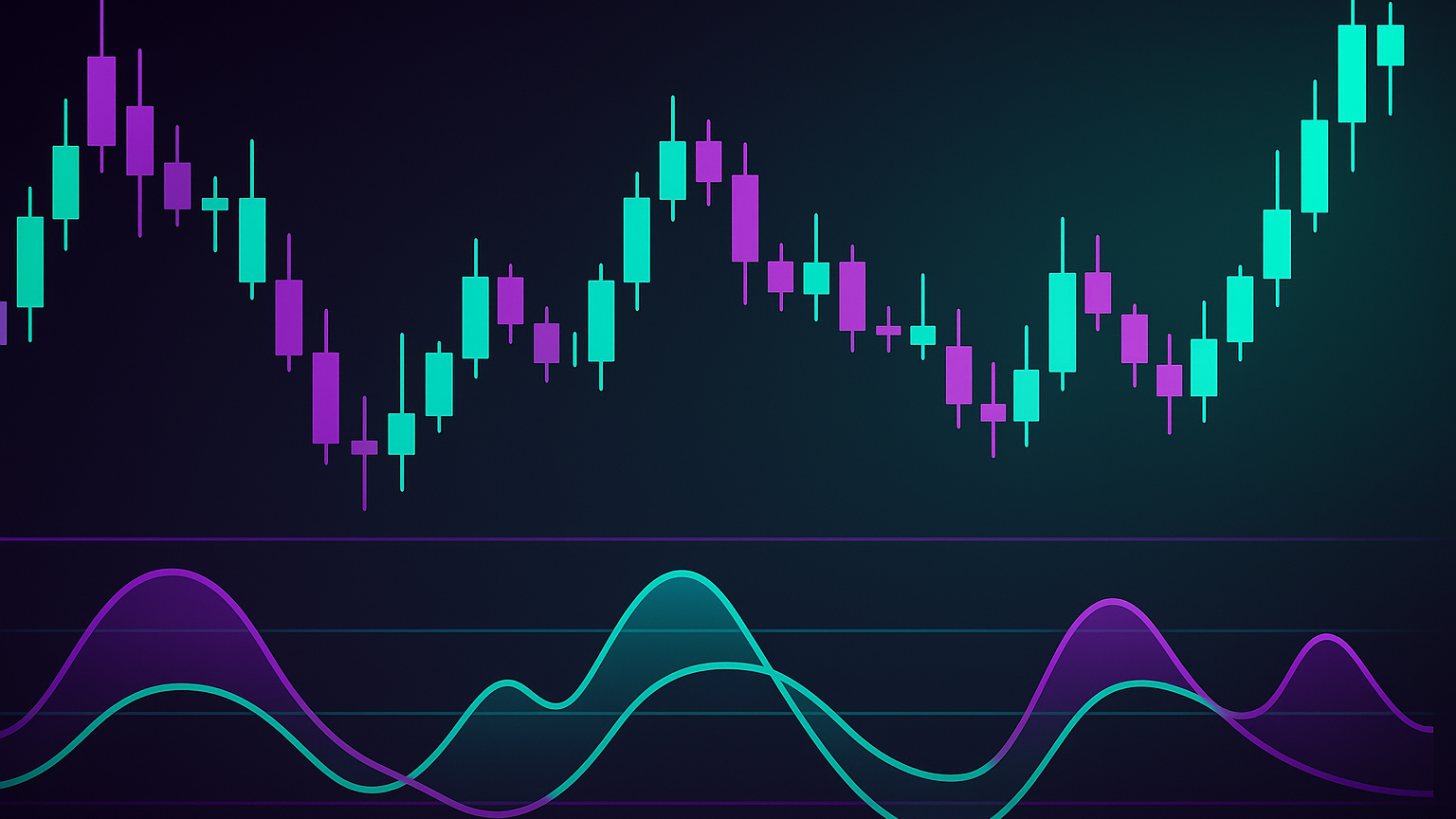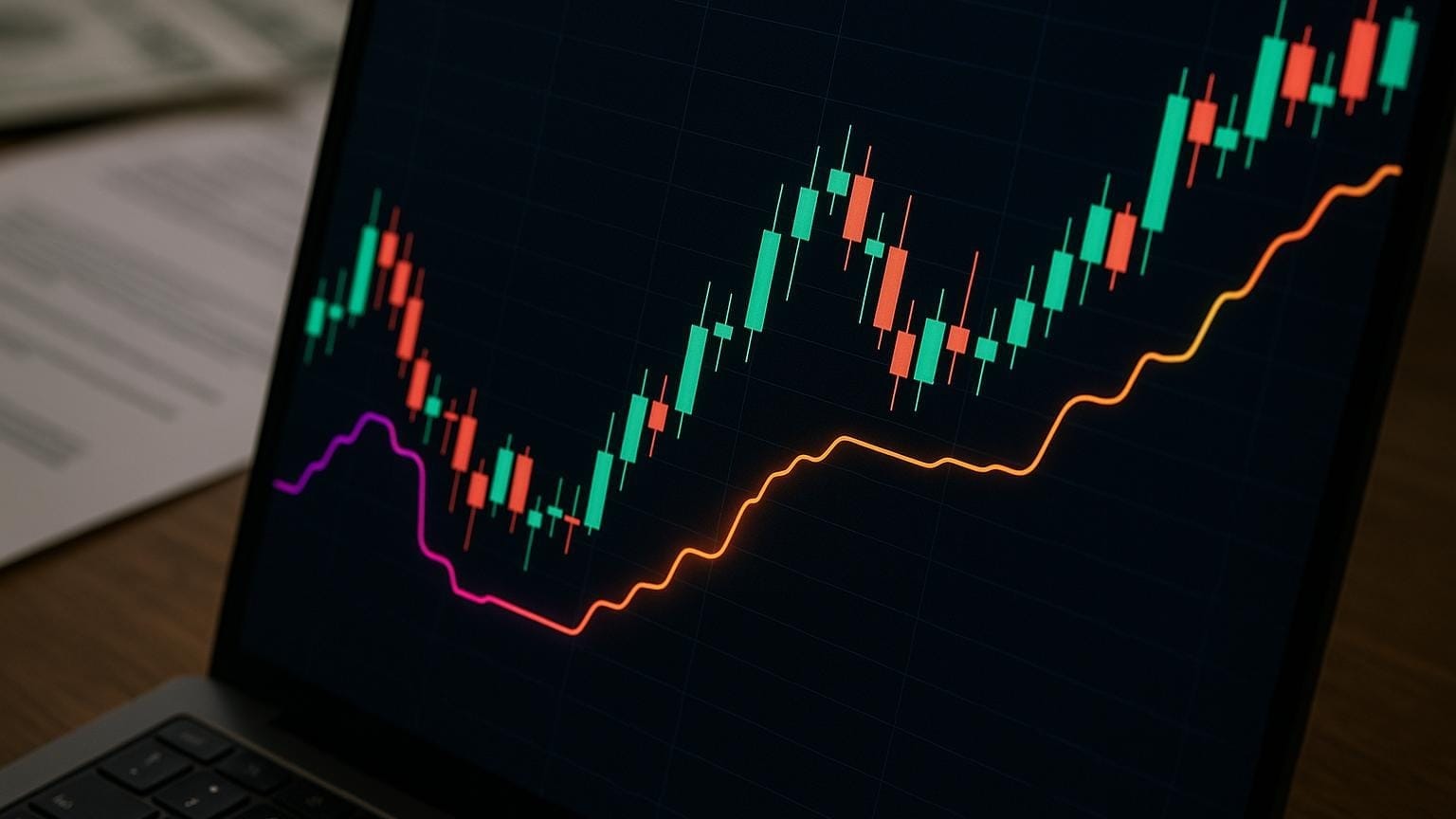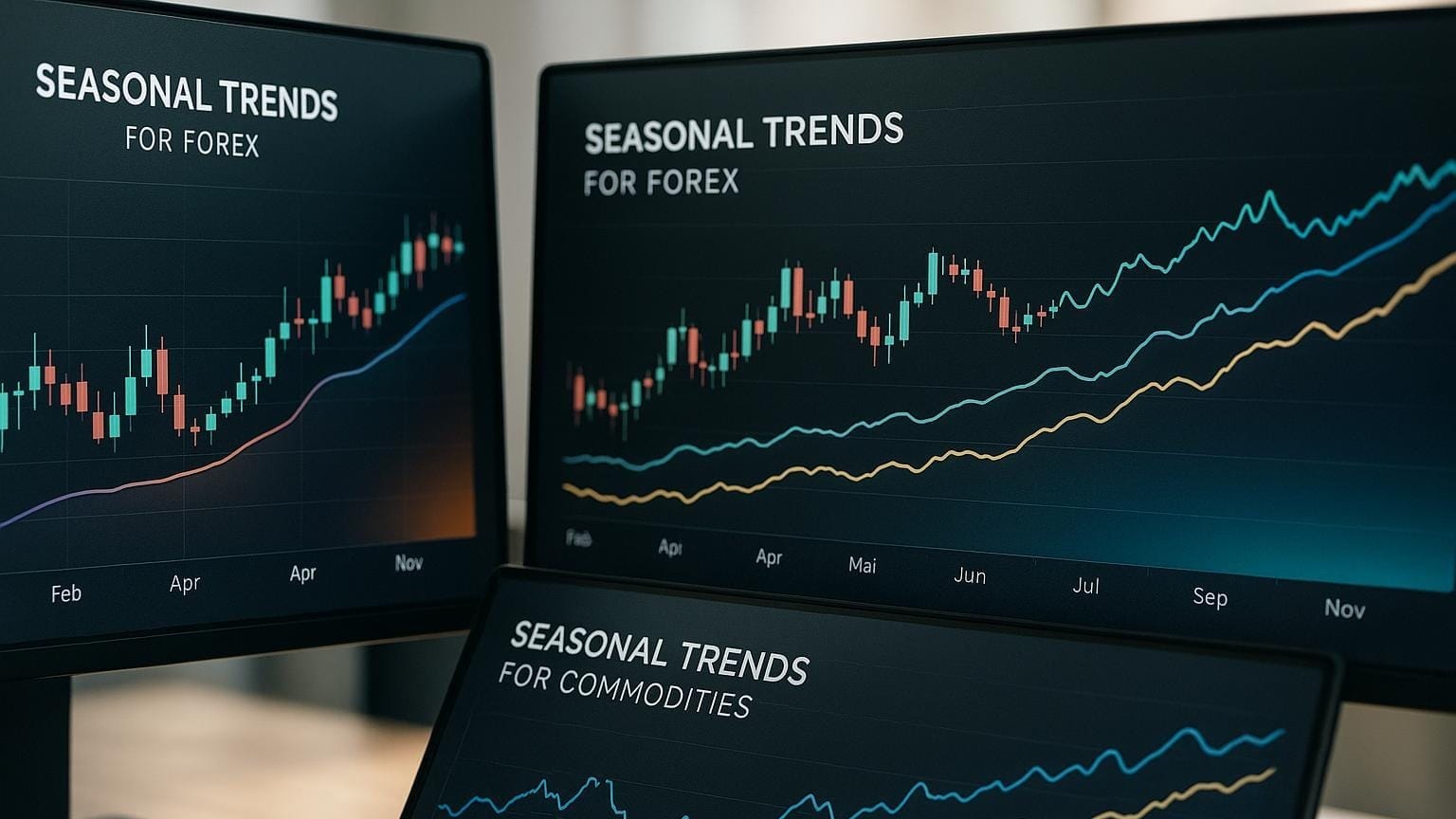Learn to recognize popular candlestick patterns that signal market sentiment and potential price movements for effective trading strategies.
Candlestick patterns are essential for traders to understand market sentiment and predict price movements. They visually represent the battle between buyers and sellers, helping identify trend reversals or continuations. Here's what you need to know:
- Key Patterns: Doji, Hammer, Hanging Man, Engulfing, Morning Star, and Evening Star.
- Single Candlesticks: Provide quick signals (e.g., doji indicates indecision, hammer suggests bullish reversal).
- Multi-Candlestick Patterns: Combine 2-3 candles for stronger signals (e.g., Bullish Engulfing, Three White Soldiers).
- Parts of a Candlestick: The body shows opening/closing prices, while wicks reveal highs/lows.
- Colors: Green/white = bullish (upward), red/black = bearish (downward).
- Combine with Indicators: Use RSI, moving averages, and volume analysis for better accuracy.
Quick Tip:
Focus on patterns near key support/resistance levels and confirm them with volume or trend indicators to improve reliability. Ready to dive deeper? Let’s explore how these patterns work and how to trade them effectively.
The Only Candlestick Patterns Trading Video You Will Ever Need
Parts of a Candlestick
To analyze trading patterns effectively, you first need to understand how candlesticks work. Each part of a candlestick tells a story about market behavior and sentiment during a specific trading period.
Body, Wicks, and Color Meaning
A candlestick has two main parts: the real body and the shadows (or wicks). The real body represents the range between the opening and closing prices. Meanwhile, the shadows extend above and below the body, showing the highest and lowest prices during the trading period.
Colors play a key role in quickly identifying market direction:
- Green or white candlesticks: The closing price is higher than the opening price, signaling upward (bullish) movement.
- Red or black candlesticks: The closing price is lower than the opening price, indicating downward (bearish) movement.
Pay attention to the size and placement of these elements to gain deeper insights into market trends.
Reading Size and Position
The size and position of a candlestick's body and wicks reveal the tug-of-war between buyers and sellers.
| Component | Market Signal | Trading Implication |
|---|---|---|
| Long Body | Strong price movement | Indicates clear market trend |
| Short Body | Limited price movement | Suggests potential stalling or consolidation |
| Long Upper Wick | Selling pressure | May point to resistance level |
| Long Lower Wick | Buying pressure | Could signal a support level |
Long wicks often highlight price rejection at key levels. For example:
- A long upper wick shows buyers initially pushed prices higher, but sellers regained control.
- A long lower wick suggests strong buying interest after an initial price drop.
The combination of body size and wick length provides even more clues:
- A small body with long wicks hints at indecision and possible market reversal.
- A large body with short wicks often signals a continuation of the current trend.
- Equal-length wicks may indicate balance between buyers and sellers, potentially leading to consolidation.
Single Candlestick Patterns
Single candlestick patterns provide clues about potential market reversals or continuations.
Doji Patterns
A doji forms when the opening and closing prices are nearly the same, creating a cross-like shape. Alan Tsagaraev describes it well:
"A doji candlestick is a kind of technical analysis pattern, which means that the market is rather neutral; neither buyers nor sellers prevail"
Here are the main types of dojis and what they indicate:
| Doji Type | Appearance | Market Signal |
|---|---|---|
| Long-Legged | Cross with long upper and lower shadows | High volatility, market indecision |
| Dragonfly | T-shaped with a long lower shadow | Possible bullish reversal |
| Gravestone | Inverted T-shape with a long upper shadow | Possible bearish reversal |
| Neutral | Small cross with short shadows | Market equilibrium |
To interpret doji patterns effectively, combine them with other indicators. Typically, the body of a doji should be no more than 5% of the candle's total range.
Hammer and Hanging Man
Hammer and Hanging Man patterns look similar but send opposite signals. Both feature a small upper body and a long lower shadow.
Here’s how they differ:
| Pattern | Market Context | Signal | Trading Approach |
|---|---|---|---|
| Hammer | Found in a downtrend | Indicates a bullish reversal | Look for confirmation with a bullish candle or a price close above the hammer's high |
| Hanging Man | Found in an uptrend | Indicates a bearish reversal | Wait for bearish confirmation before entering short positions |
Tradingmatica.net explains:
"The hanging man pattern is a warning of potential price change, but not by itself a signal to go short"
Strong Trend Patterns
Some single candlestick patterns highlight strong market trends, showing clear control by either buyers or sellers. Steve Nison puts it:
"Each candlestick is a simple, yet powerful tool to understand what's happening in the market"
To trade these patterns effectively:
- Confirm signals with subsequent candles.
- Consider the overall market context.
- Use stop-loss orders for risk management.
- Check volume and key support/resistance levels.
2 and 3 Candlestick Patterns
Two- and three-candlestick patterns can help identify market direction by highlighting shifts in buying and selling pressure.
Engulfing Patterns
Moving beyond single candlesticks, paired patterns like engulfing formations provide stronger reversal signals. These occur when a candle completely engulfs the body of the one before it, often appearing after a clear trend.
| Pattern Type | Formation | Signal Strength | Best Trading Approach |
|---|---|---|---|
| Bullish Engulfing | Small red candle followed by a larger green one | Around 60% success at key support levels | Enter long when price breaks above the second candle's high |
| Bearish Engulfing | Small green candle followed by a larger red one | Signals a reversal in an uptrend | Place stop loss above the pattern's high |
Star Patterns
Star patterns, which involve three candles, offer even more refined reversal signals. Here’s how they work:
-
Morning Star (in downtrends):
- First candle: Long red, showing strong selling pressure
- Second candle: Small body, signaling indecision
- Third candle: Strong green, confirming buyers are taking control
-
Evening Star (in uptrends):
- Mirrors the Morning Star structure, but signals a bearish reversal.
Trend Confirmation Patterns
Three White Soldiers and Three Black Crows show sustained dominance by buyers or sellers. As John Murphy explains:
"A revolutionary concept developed by Greg Morris in 1991, called candle pattern filtering, provides a simple method to improve the overall reliability of candle patterns..."
These three-candle formations are strong indicators of trend continuation. To trade them effectively, follow these tips:
- Cross-check signals across multiple timeframes, with a focus on daily charts.
- Look for confirmation through increased trading volume.
- Use technical indicators like RSI or MACD to validate patterns.
- Set stop-loss levels based on the pattern's structure and current market volatility.
Trading with Candlestick Patterns
Using Multiple Indicators
Combining candlestick patterns with other technical tools can improve trading decisions. For instance, in early 2024, the Vanguard Information Technology ETF (VGT) dropped 10% between March and April. A hammer candlestick pattern, coupled with an oversold RSI and strong support, signaled a 26% rally by mid-July.
Here’s how you can pair candlestick patterns with key indicators:
| Indicator Combination | Purpose | Best Practice |
|---|---|---|
| Moving Averages | Confirm trends | Use 50- and 200-day moving averages to validate candlestick signals |
| RSI/Stochastic | Assess momentum | Check for oversold or overbought conditions matching patterns |
| Volume Analysis | Gauge strength | Ensure patterns form with above-average volume |
| Fibonacci Levels | Identify key zones | Use retracement levels to spot potential reversal points |
Even with multiple tools, errors in interpreting patterns can be costly.
Common Pattern Reading Mistakes
Misreading candlestick patterns can result in poor trades. Here are some common pitfalls:
- Ignoring Market Context: For instance, relying on a hammer pattern on a 1-hour chart during a strong downtrend can backfire.
- Timeframe Misjudgment: Patterns on very short timeframes, like 1-minute charts, often reflect market noise rather than meaningful trends.
- Overlooking Volume: Acting on a bullish breakout pattern without confirming above-average volume can lead to false breakouts and losses.
Pattern Recognition Tools
Modern trading platforms simplify candlestick pattern detection. In the Library, the Candlestick Structure indicator on TradingView and MetaTrader automatically identifies market structure and candlestick formations. Its features include:
- Automatically identifying market structure and candlestick patterns
- Filtering out low-probability setups that don't align with the broader trend
- Sending real-time alerts for pattern formations
- Integrating with other indicators for a more detailed analysis
Combining these tools with solid risk management and market analysis can yield better results. For example, Adobe Inc. (ADBE) showed this in August and September 2024: a doji pattern signaled a 12% rally, followed by a rising three methods pattern that added another 7%.
Conclusion
Summary
Candlestick patterns play a key role in technical analysis, helping traders gauge market sentiment and predict price changes. Originating in 18th century Japan, these patterns have become vital for identifying reversals and continuations. Patterns like the doji, hammer, and engulfing are most effective when confirmed by higher timeframes, trend alignment, and additional indicators.
"Each candlestick is a simple, yet powerful tool to understand what's happening in the market"
Getting Started
To effectively use candlestick patterns, consider the following steps:
| Phase | Actions | Key Points |
|---|---|---|
| Learning | Study pattern basics and context | Focus on daily timeframes for consistent signals |
| Practice | Use demo accounts for pattern recognition | Combine with volume and trend analysis |
| Implementation | Start with key patterns and apply strict risk management | Use tools like moving averages and RSI |
| Refinement | Incorporate additional indicators | Adjust strategies based on performance |
"A revolutionary concept developed by Greg Morris in 1991, called candle pattern filtering, provides a simple method to improve the overall reliability of candle patterns..."
"The game of speculation is the most uniformly fascinating game in the world. But it is not a game for the stupid, the mentally lazy, the person of inferior emotional balance, or the get-rich-quick adventurer"
Start with core patterns, keep detailed trading records, and expand your skills as you gain more experience.








